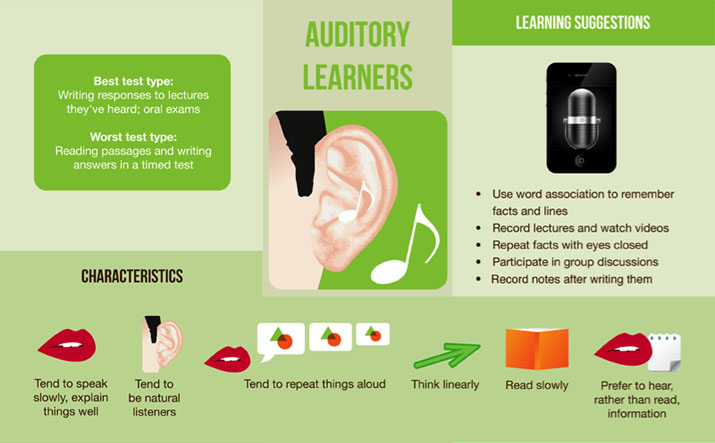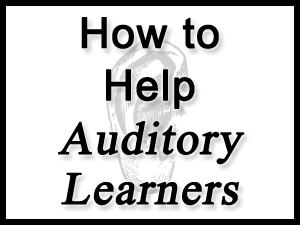

But people have raised questions about this approach and its application in academic progress. And in turn, students would listen to them and make a mental note of the information.

In contrast, teachers can combine dynamic activities with auditory teaching techniques and narrate or elaborate on a concept. Moreover, it is different from other styles of learning, like kinesthetic, wherein students take an active role in academic tasks, including art and crafts, role-playing, and on-site visits or field trips. Because you never know which strategy would fit well with students however, if you are uncertain, it is ideal for identifying the learning gaps and needs respectively.Ī distinctive learning style wherein students learn by listening is called auditory learning instead of reading or writing the study materials, they listen to lectures or pay attention to instructions. However, institutes must utilize visual, kinesthetic, and auditory attributes to teaching as they connect well with different kinds of learning. Speaking of activities, teachers are well aware of the short attention span of students hence, they include various teaching activities. So, it is not very far-fetching to assume that if students have diverse learning styles, the faculty must adopt different teaching practices, including auditory learning activities. No wonder some students reply faster to a complex question while others might take time to analyze and gather their thoughts. And the main reasons behind that lie in the different learning capabilities and knowledge retention. It is noteworthy that although teachers may use the same approach for the students in the class, Everyone may not understand everything at the same time. Flipd- shows how long you’ve spent on apps, sleeping, studying, etc.Do you remember the first time you learned subtraction, addition, or multiplication? If yes, you must recall how you finally grasped the concept.Cram - flashcards to prepare for all types of subject matter and multiple choice tests.StudyBlue - has study materials for all different courses.

Chegg Prep - flashcards created to prepare for all types of subject matter.

View Helpful Flyers!įree apps for online learning, productivity, and stress reduction Studying 8711 and a staff member will meet you at the entrance to open the door. When you arrive at Pine Dale Hall please use the call box and dial ext. Office of Student Accessibility Services is located in Pine Dale Hall, Room 7136. Simply schedule an appointment with us to discuss your unique needs. UMass Dartmouth strives to ensure complete access to University academic programs. Students who have documented disabilities on our campus are afforded a variety of services to accommodate their individual needs. The Office of Student Accessibility Services works with faculty, staff, and students to ensure that appropriate academic adjustments are made that allow all students equity inside the classroom. The Office of Student Accessibility Services, oversees the University’s compliance with the legal mandates expressed in Section 504 of the Rehabilitation Act of 1973 and the Americans with Disabilities Act of 1990 for students with documented disabilities. Returning students need to register each semester. If you have any questions regarding documentation, please see our documentation guidelines. Documentation can be brought with you to your appointment, sent to our email address or faxed. If you wish to receive accommodations, you will need to self-disclose to us by calling to make an appointment to speak with one of the directors – 508.999.8711.


 0 kommentar(er)
0 kommentar(er)
